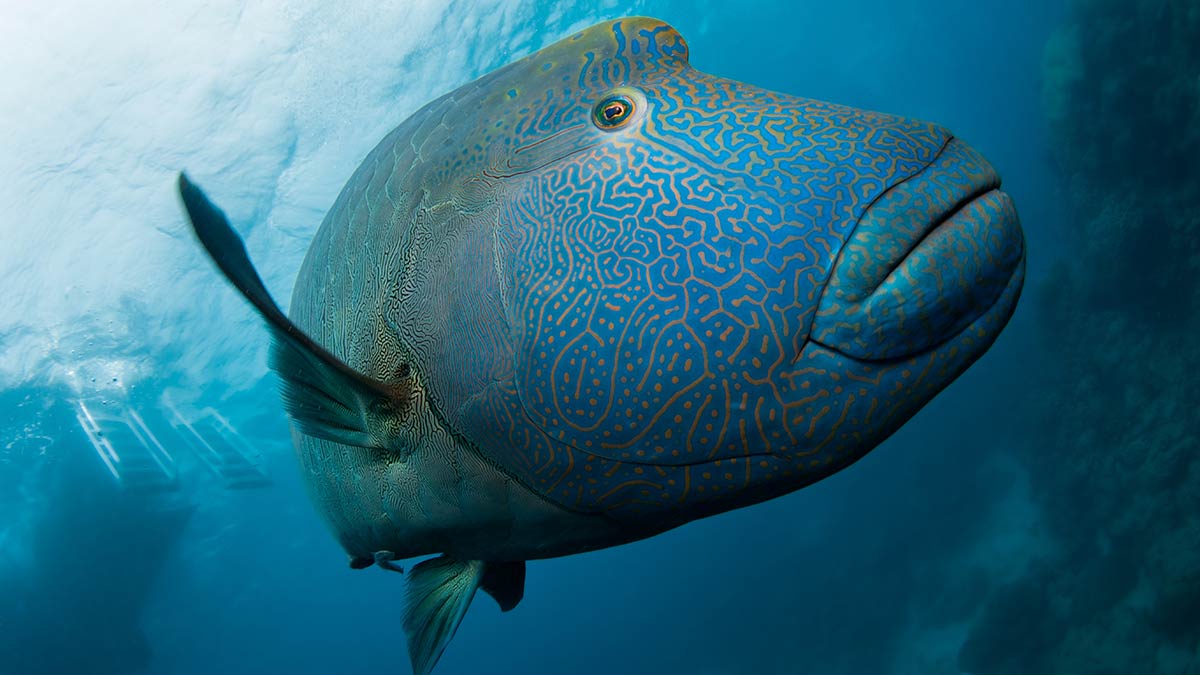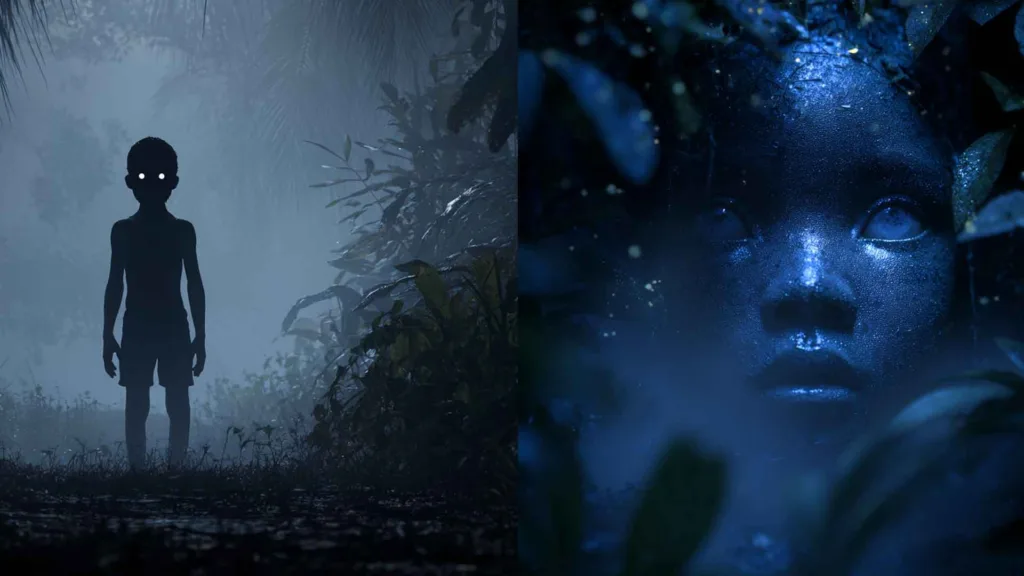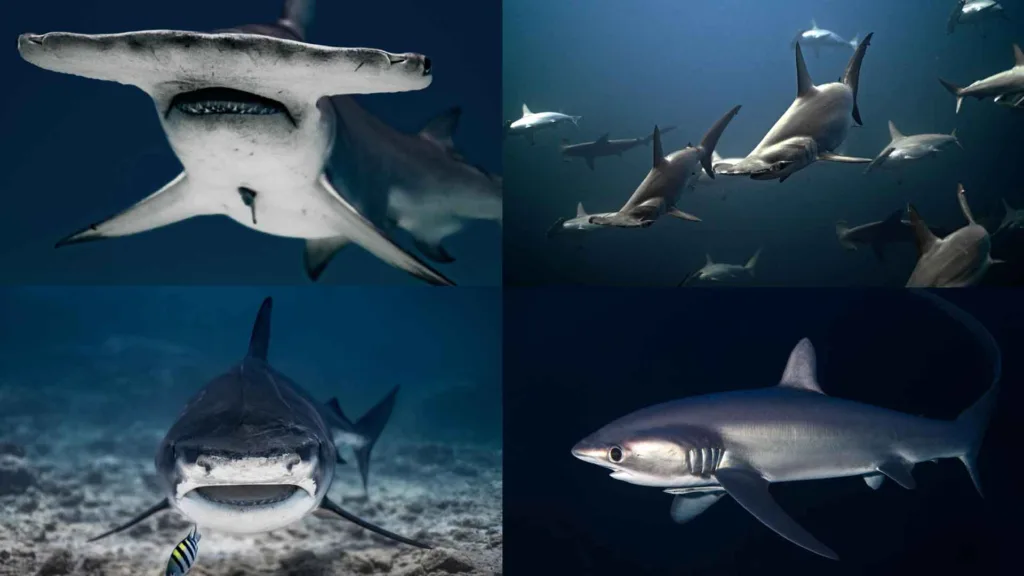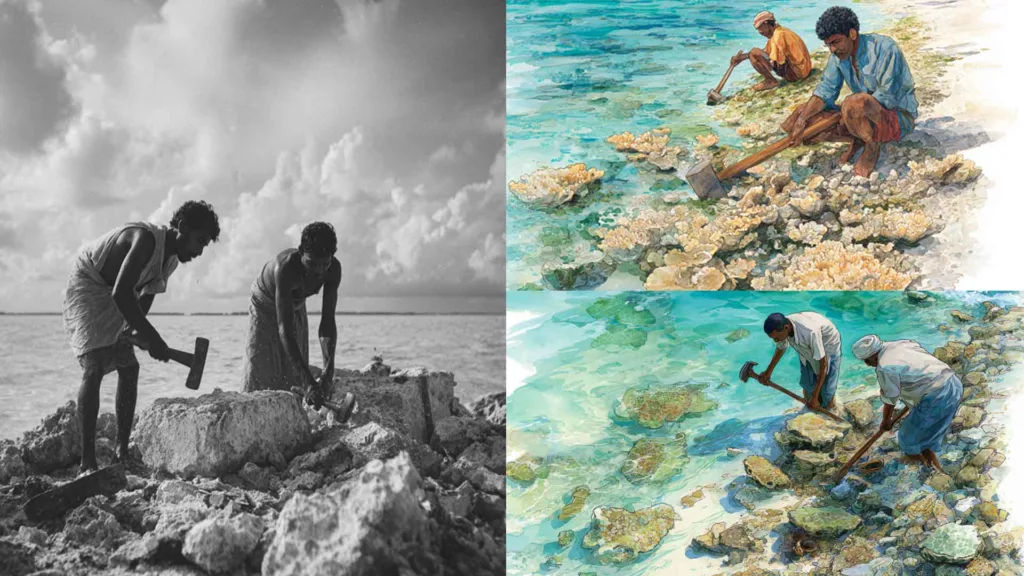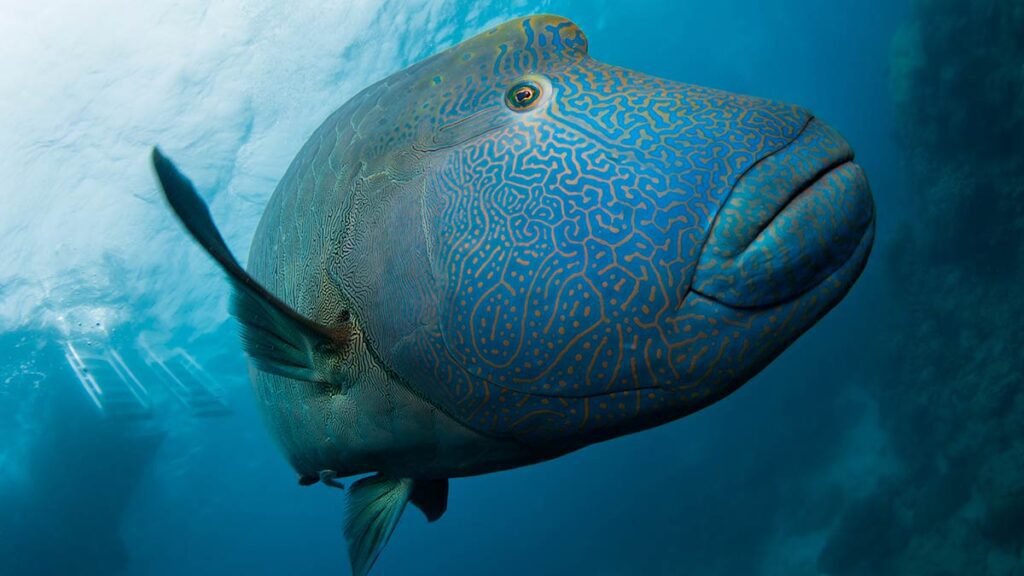
Napoleon Wrasse is one of the most important fish living in the reef. They are called ‘Maori Wrasse’. Its enormous size and prominent bulge are the distinct features of this fish. With its exquisite pattern and being a majestic fish, they are known as a “friendly” fish. This is an intelligent fish. If a diver or a snorkeler is near the fish, they look around and rove their eyes to follow, examine and observe their movements. They can turn their eyes almost 360 degrees.
Napoleon Wrasse is the largest member of the Wrasse family. Wrasses are a diverse and colorful group of marine fish. They belong to the family Labridae. This fish can be easily recognized by its size, color, pattern, and shape. The fleshy lips and a hump over the head are also noticeable features of this iconic fish. They can grow up to 230 cm and weigh up to 190 kg. The hump becomes prominent with its age; an older male has a more prominent hump.
The colors of this fish vary with age and sex. The male has a bright electric blue to green or purplish-blue color. The matured males have a black stripe along the sides, blue spots on their body scales and blue scribbles on the head. In juveniles, a pale greenish color and two black lines run behind the eye. On the upper parts of the body, red-orange can be seen on female fish. Below the fish, red-orange to white is found. The formation of their mouth is different. Napoleon Wrasse has separate jaw teeth that jut outward.
Napoleon wrasse are protogynous hermaphrodites. All of them are born as females. They grow up and reproduce as females. And when they grow older and considerably become larger, the phenomenon happens – a female becomes a male. During this transformation, the color of the female changes from rusty red-orange to bright blue-green colors.
They spawn in groups and release eggs and sperm into the water column at the same time. If there is a shortage of males, the females turn into males around nine years old. But unlike other Wrasse species, Humphead Wrasse cannot turn back to being female after becoming male (Ivana, Janez 2021).
They spend most of their time feeding. The adults normally live alone. In daytime, they move around reefs and at night return to their dens such as caves or ledges.
This is a very curious fish.
In the Red Sea, they were fed with boiled eggs although it was prohibited later due to the high cholesterol found in dead specimens. In the Maldives also, they are fed with boiled eggs.
Napoleon Wrasse eats shellfish, sea stars, sea urchins, and crabs. They crush the shells to remove the animal in the shells. They also crush large chunks of dead coral rubble with their peg-like or corn-shaped teeth to feed on mussels and worms.
Napolean Wrasse is a treasured fish that contributes to the balance of the coral reef ecosystem. They tear apart toxic fish such as sea hares, box fish, and crown-of-thorns starfish.
They are believed to live for 30 years.
Napoleon Wrasse is a globally threatened species. The Napoleon Wrasse (Cheilinus undulatus) is listed as endangered on the International Union for Conservation of Nature (IUCN) Red List.
The Maldives was the first country to ban its export in 1995. A study conducted in Laamu Atoll, Southern Maldives, from 1996 to 1997, showed potential spawning sites. The study was conducted in four habitats – channels, inner reefs, outer reefs and faros. (Roe, Hashim, Evans, Mitcheson 2022).
A second study of such a kind was conducted from 2018 to 2020. Twenty-four sites were analyzed for 27 months in this study. The latter study results were compared to the previous study. The study was conducted in 6 channels, 4 inner reefs, 4 outer reefs, and 10 faros. It indicated that the Napoleon Wrasse density was not uniform across the atoll and it varied among the habitats.
Significantly higher density was observed in channels and the lowest was observed around faros. This study also revealed that habitat patterns were the same as the previous study on Laamu Atoll that was conducted from 1995 to 1996. The latter study also found that Napoleon Wrasse was common in channels.
It was also found that the fish were between 60 and 100 cm in length (Sluka 2005) and size did not vary between outer and inner atoll rim sites. Large fish (120 to 150 cm) were also found in channels. The presence of large fish in channels and in groups indicates spawning and this is because there was low or no fishing pressure in the area.
This study also identified channels as an important habitat for fish species. Reef channels host aggregations of a diversity of fish taxa that can provide multiple social and ecological benefits for islands and their people (Fisher et al. 2018, Breckwoldt et al. 2022).
According to dive magazines that were available in the Maldives, in the late 1980s and early 1990s, Napoleon Wrasse was very popular with divers. At that time, large Napoleon Wrasse (1.4−1.5 m TL) was resident at many popular dive sites including Banana Reef, Okkobe Thila, Nassimo Thila, Male’ West Park area in Male’ Atoll, Fish Head in North Ari Atoll, and Rakeedhoo Kandu in Vaavu Atoll. However, in the 1990s, the dive guides reported that large adults had disappeared from these sites.
The presence of Napoleon Wrasse in the seas of Maldives has captivated divers. It is important to protect this species to sustain the biodiversity of this remarkable marine environment. One of the most famous Napoleon Wrasse was found in the Great Barrier Reef, Australia. Wally was born a female. It was first named Sarah. But at the age of 9, it became a male (Jenkins 2015).
